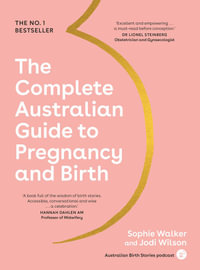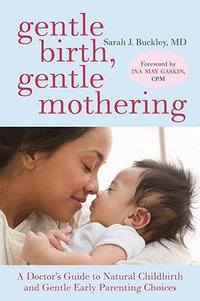| Foreword | p. xi |
| Preface | p. xiii |
| Abbreviations | p. xiv |
| List of Cases | p. xvi |
| Introduction | p. 1 |
| The History of the International Code | p. 3 |
| The Historical Development of the International Code | p. 5 |
| Introduction | p. 5 |
| Developments Between October 1979-May 1980 | p. 7 |
| The preparation of the International Code | p. 8 |
| The First Draft of the International Code | p. 8 |
| Consultations on the First Draft | p. 10 |
| The Second Draft of the International Code | p. 15 |
| Action by the World Health Assembly in May 1980 | p. 15 |
| Some Observations on the Process of the Preparation of the International Code | p. 17 |
| Developments Between May 1980-January 1981 | p. 21 |
| The Establishment of a Steering Committee and Drafting Group | p. 21 |
| The Third Draft of the International Code | p. 23 |
| The Consultations of August and September 1980 | p. 23 |
| The Fourth Draft of the International Code | p. 25 |
| The Legal Implications of an International Code as a Regulation and as a Recommendation | p. 26 |
| Regulation | p. 27 |
| Recommendation | p. 29 |
| The Final Phase of the Preparation of the International Code (January-May 1981) | p. 30 |
| The Action of the Executive Board in January 1981 | p. 30 |
| Some Observations on the Process of the Preparation of the International Code Until January 1981 | p. 33 |
| The Adoption of the International Code by the World Health Assembly in May 1981 | p. 38 |
| Some Observations on the Adoption of the International Code by the World Health Assembly | p. 43 |
| The International Code of Marketing of Breast-Milk Substitutes | p. 45 |
| The Aim of the International Code | p. 47 |
| The Protection and Promotion of Breast-feeding | p. 49 |
| The Proper Use of Breast-milk Substitutes when Necessary | p. 54 |
| Breast-feeding and HIV | p. 58 |
| Breast-feeding and Emergencies | p. 62 |
| Conclusion | p. 63 |
| The Material Scope of the International Code | p. 66 |
| Marketing and Practices Related Thereto | p. 67 |
| Breast-milk Substitutes | p. 69 |
| Milk Products, Foods and Beverages, including Bottle-fed Complementary Foods | p. 71 |
| Feeding Bottles and Teats | p. 75 |
| Quality of Products Covered by the International Code | p. 76 |
| Availability of Products Covered by the International Code | p. 78 |
| Information Concerning the Use of Products Covered by the International Code | p. 79 |
| Definitions of the International Code | p. 82 |
| Definitions | p. 82 |
| Breast-milk Substitute | p. 84 |
| Complementary Food | p. 85 |
| Container | p. 85 |
| Distributor | p. 86 |
| Health Care System | p. 87 |
| Health Worker | p. 87 |
| Infant Formula | p. 88 |
| Label | p. 88 |
| Manufacturer | p. 89 |
| Marketing | p. 89 |
| Marketing Personnel | p. 90 |
| Samples | p. 90 |
| Supplies | p. 91 |
| Conclusion | p. 92 |
| Information and Education Under the Regime of the International Code | p. 95 |
| Responsibility for the Provision of Information on Infant Feeding | p. 97 |
| Informational and Educational Materials and their Contents | p. 101 |
| Donations of Informational and Educational Equipment and Materials | p. 105 |
| Advertising and Promotion of Products Covered by the Code | p. 111 |
| Ban on Advertising and Other Forms of Promotion to the General Public | p. 114 |
| Ban on the Giving of Samples | p. 119 |
| Ban on Advertising, Promotion and the Giving of Samples at the Retail Level | p. 122 |
| Ban on Gifts of Articles and Utensils | p. 124 |
| Ban on Contacts between Marketing Personnel and Pregnant Women and Mothers | p. 126 |
| The Position of the Health Care System Under the International Code | p. 129 |
| Measures to Encourage and Promote Breast-feeding | p. 130 |
| Information and Advice to Health Workers | p. 134 |
| Ban on Promotion in the Health Care System | p. 135 |
| Ban on Specific Aspects of Promotion in the Health Care System | p. 135 |
| Personnel Provided or Paid for by Manufacturers or Distributors | p. 137 |
| Demonstration of Feeding with Breast-milk Substitutes | p. 138 |
| Donations or Low-price Sales of Supplies of Products Covered by the International Code | p. 139 |
| The Supplies Should be Made to Institutions or Organizations | p. 140 |
| Infants Who Have to be Fed on Breast-milk Substitutes | p. 142 |
| Distribution of Supplies for Outside Use by Institutions or Organizations | p. 146 |
| Supplies Should not be Used as Sales Inducement | p. 148 |
| Supplies and the Infant Food Industry | p. 149 |
| Dobnations of Equipment and Materials | p. 153 |
| The Position of Health Workers Under the International Code | p. 155 |
| Encouragement and Protection of Breast-feeding | p. 156 |
| Scientific and Factual Information Relating to Products Covered by the International Code | p. 159 |
| Financial or Material Inducements to Health Workers or their Families | p. 162 |
| Ban on Samples, Equipment and Utensils to Health Workers | p. 167 |
| Disclosure of Contributions to Fellowships, Study Tours, Research Grants and Conference Attendance | p. 169 |
| Company Employees | p. 174 |
| Sales Incentives | p. 175 |
| Educational Functions by Marketing Personnel | p. 176 |
| Labelling | p. 180 |
| Points to be Included in the Label | p. 181 |
| Important Notice | p. 183 |
| Superiority of Breast-feeding | p. 183 |
| Use of Breast-milk Substitutes on the Health Worker's Advice | p. 184 |
| Instructions for Appropriate Preparation of Breast-milk Substitutes and Warning of Health Hazards | p. 185 |
| The Use of the Term ôInfant Formulaö | p. 186 |
| Ban on Pictures or Texts in the Label | p. 187 |
| Food Products not Suitable as Breast-milk Substitutes | p. 190 |
| Composition, Storage, Batch Number and Expiry Date of Breast-milk Substitutes | p. 191 |
| Quality of Food Products Covered by the International Code | p. 194 |
| Codex Standards and the Code of Hygienic Practice for Foods for Infants and Children | p. 194 |
| Implementation of the International Code | p. 199 |
| Is Implementation of the International Code Compulsory? | p. 200 |
| The Extent of Implementation of the International Code | p. 209 |
| Partial Implementation of the International Code | p. 211 |
| Modes of Implementation of the International Code | p. 213 |
| Legislation | p. 213 |
| Regulations | p. 214 |
| Other Suitable Measures | p. 215 |
| Voluntary Agreements | p. 216 |
| The Advantages of Proper Implementation of the International Code | p. 219 |
| The Disadvantages of Non-implementation | p. 223 |
| Monitoring of the International Code | p. 224 |
| State Monitoring | p. 225 |
| Collective Monitoring | p. 227 |
| Self-monitoring by Industry | p. 230 |
| The Role of NGOs, Groups, Institutions and Individuals in Monitoring | p. 233 |
| Conclusions | p. 237 |
| Appendices | p. 241 |
| The International Code of Marketing of Breast-milk Substitutes | p. 242 |
| Relevant Resolutions of the World Health Assembly | p. 252 |
| Bibliography | p. 301 |
| Books | p. 301 |
| Articles and Documents | p. 302 |
| Index | p. 305 |
| Table of Contents provided by Ingram. All Rights Reserved. |
























